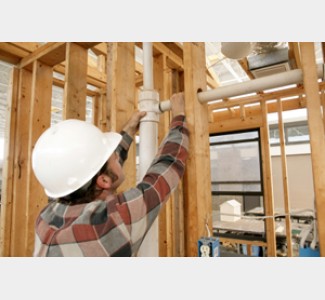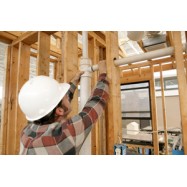Home » » Drainage
- Description
- Reviews
- Related Products
Drains and proper drainage are important parts of any home. Learn about the different types of drains, traps and vents, and how they work in a typical house.
Whenever water comes into a home, it has to have a way to leave after it's been used. This is where the importance of drains and proper drainage comes into play. Most homes utilize the same basic principles for plumbing and drain systems: A main water line usually comes in around the home's foundation; from this point, it runs over to a water heater. The water heater generates hot water for the entire house. From the water heater, hot and cold water lines run throughout the house, supplying each of the fixtures with water.
Most people don't realize how a home drainage system works; they assume that when they release water from the sink or flush a toilet, the water just goes away. Although this is partially true, a little more is involved in the process of removing waste water from the home. Each fixture has its own drain line; each of the drain lines ties into a larger main line, which takes the water out of the house.
People who live in urban and suburban areas and get their water from a municipality usually have their waste water drain into a sewer system. Septic tanks generally need to be pumped out every 10 years or so to prevent backup, which can cause problems with the home's drainage system.
The most important component of a drain, which most people take for granted, is the trap. They're called traps because they do just that: trap water inside, preventing sewer gases from coming back into the house.
Several connections are needed when connecting a trap. First is the nut, which connects two pieces together with a threaded fitting. A ferrule forms the seal; the nut simply screws down over the ferrule to form a water tight seal.
Vents are a major component in a home's drainage system. Venting allows water to pass out of the drains easily. Today, houses are vented through the roof. Roof flashing, made from heavy grade rubber, lead or sheet metal holds the vent pipe in place.
Another thing to consider is pitch. Pitch simply means the angle in which water will flow easily and gradually with the help of gravity. Every drainpipe, whether underground or in a wall, must have some type of pitch and be sloped properly to allow wastewater leaving the home to drain out. To ensure water will drain properly and won't back up in the line, a good rule of thumb to follow when installing pipe is a drop of 1/4 inch per foot.






